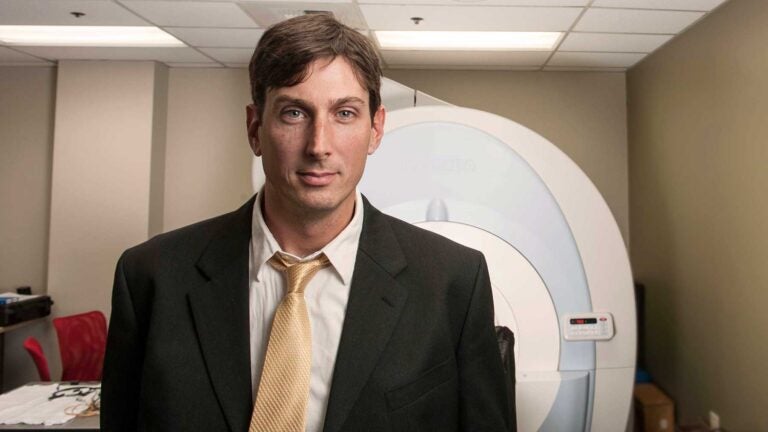
USC Assistant Professor Jason Kutch of the USC Division of Biokinesiology and Physical Therapy (Photo/Vern Evans)
Chronic pelvic pain affects millions, but not much is known about it
USC researcher gets National Institutes of Health grant to advance his study of the disorder
What do you know about chronic pelvic pain?
USC Assistant Professor Jason Kutch is furthering his work on the disorder that affects millions of men.
Chronic prostatitis has no established cause, and there are no generally effective treatments. The pain can be debilitating, affecting one’s ability to perform a number of ordinary tasks, such as sitting and walking. The disorder can also affect bowel and bladder function.
“CP/CPPS symptoms can start suddenly for men in their 20s, 30s or 40s,” said Kutch, assistant professor in the USC Division of Biokinesiology and Physical Therapy. “These symptoms can last for a long time and really upend someone’s life, so there is a pressing need for a better understanding of this condition.”
Stretch and relax
Kutch recently published the first neuroimaging study comparing men with CP/CPPS to healthy men. His preliminary research showed that men with the disorder experience dysfunction in a specific region of the brain called the motor cortex, which controls pelvic floor muscles.
These findings fit with the physical therapy approach to treating CP/CPPS. One of Kutch’s collaborators on the project, Daniel Kirages, is a physical therapist who treats the disorder with a combination of pelvic floor muscle stretching and relaxation.
“We are excited about our preliminary findings, but we need to carefully establish the link between brain and pelvic floor muscle dysfunction before we can improve therapy for CP/CPPS,” Kutch said.
Neuroimaging studies
A $1.3-million grant from the National Institutes of Health will help Kutch build on his research for the next four years. He plans to perform neuroimaging studies on nearly 50 men with chronic pelvic pain and 50 men who do not have a history of pelvic pain. He will also measure pelvic floor muscle activity to better understand the link between dysfunction in the brain and poor pelvic muscle control.
His research may provide groundwork for additional investigation into whether noninvasive motor cortex stimulation, combined with physical therapy, can be a viable treatment.
“Our hope is that this study will really point us toward next-generation therapies,” Kutch said.
